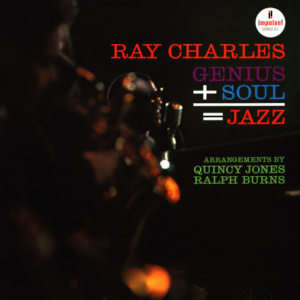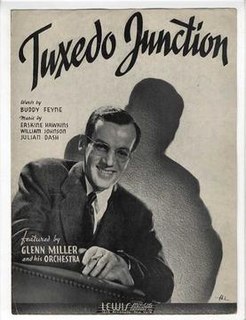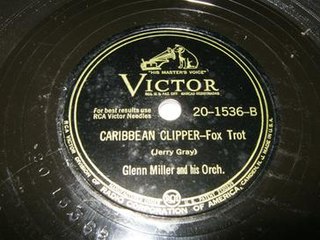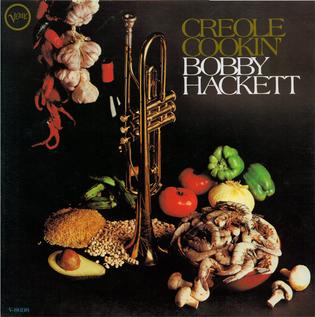Related Research Articles

AWB is the second studio album by the Scottish funk and soul band Average White Band, released in August 1974.

"In the Mood" is a popular big band-era jazz standard recorded by American bandleader Glenn Miller. "In the Mood" is based on the composition "Tar Paper Stomp" by Wingy Manone. The first recording under the name "In the Mood" was released by Edgar Hayes & His Orchestra in 1938.

The Dorsey Brothers were an American studio dance band, led by Tommy and Jimmy Dorsey. They started recording in 1928 for OKeh Records.

Sinatra–Basie: An Historic Musical First is a 1962 studio album by Frank Sinatra, arranged by Neal Hefti.

L.A. Is My Lady is the 57th and final solo studio album by Frank Sinatra, released in 1984 and produced by Quincy Jones. While the album was Sinatra's last, he recorded five further songs, only four of which have been officially released.

Ellington Indigos is a 1958 jazz album by Duke Ellington.

Genius + Soul = Jazz is a 1961 album by Ray Charles featuring big band arrangements by Quincy Jones and Ralph Burns. Charles is accompanied by two groups drawn from members of The Count Basie Band and from the ranks of top New York session players. It was recorded at Van Gelder Studio in two sessions on December 26 and 27, 1960 and originally released on the Impulse! label as Impulse! A–2.

Soul on Top is the 28th studio album by American musician James Brown. The album was released in April 1970, by King. Brown and saxophonist Maceo Parker worked with arranger/conductor Oliver Nelson to record a big band, funk and jazz vocal album. It was recorded with Louie Bellson and his 18-piece jazz orchestra at United Western Recorders in Hollywood, California in November 1969, and features jazz standards, show tunes, and middle of the road hits, as well as a new arrangement of Brown's funk hit "Papa's Got a Brand New Bag".

"Tuxedo Junction" is a popular song written by Erskine Hawkins, Bill Johnson, Julian Dash with lyrics by Buddy Feyne. The song was introduced by Erskine Hawkins & His Orchestra, a college dance band previously known as the Bama State Collegians. RCA released it in 1939 and it climbed to #7 on the American pop charts. The song was a No. 1 hit for Glenn Miller & His Orchestra in 1940.

Ellington '55 is an album by American pianist, composer and bandleader Duke Ellington recorded for the Capitol label in 1953 and 1954 and released in 1955. The album features the Ellington Orchestra's performances of popular big band compositions and was reissued on CD with two bonus tracks in 1999.

This Is How I Feel About Jazz is a 1957 album by Quincy Jones. Jones arranged and conducted three recording sessions during September 1956, each with a different line-up, from a nonet to a fifteen piece big band. Musicians on the album include Art Farmer, Phil Woods, Lucky Thompson, Hank Jones, Paul Chambers, Milt Jackson, Art Pepper, Zoot Sims, and Herbie Mann. The bonus tracks on the CD release include compositions by Jimmy Giuffre, Lennie Niehaus and Charlie Mariano.

Now Hear This is the thirteenth album by American pianist and arranger Duke Pearson. It features big band performances recorded in 1968 and released on the Blue Note label.

"Caribbean Clipper" is a big band and jump song recorded by Glenn Miller and his Orchestra in 1942. The song was composed by Jerry Gray with lyrics by Sammy Gallop. The song was part of a number of songs—including "Sun Valley Jump", "Here We Go Again", "The Spirit Is Willing", "The Man in the Moon" and "A String of Pearls"—written by Gray, a member of the Glenn Miller Orchestra as an arranger, specially for Glenn Miller, who recorded it in 1943. The song was registered with the United States Copyright Office on October 23, 1942, by the Mutual Music Society.

Glenn Miller is a compilation album of phonograph records released posthumously by bandleader Glenn Miller and His Orchestra. Released in 1945 on RCA Victor as a part of the Victor Musical Smart Set series, described on the front cover as "An Album of Outstanding Arrangements on Victor Records", the set was number one for a total of 16 weeks on the newly created Billboard album charts. The album, also known under the title Glenn Miller and His Orchestra, was certified Gold in July 1968 by the RIAA.

The Glenn Miller Carnegie Hall Concert is a live album by Glenn Miller and his Orchestra. It documents a live concert recorded in Carnegie Hall in 1939. The album was released by RCA Victor in 1958.
The Glenn Miller Orchestra is a band formed after the loss of Glenn Miller, named in memory of him and the original Glenn Miller Orchestra.

Pure Gold is a 1975 compilation album of 10 studio recordings by Glenn Miller and his Orchestra recorded between 1939 and 1942 by RCA Victor. The recordings were all originally issued as 78 RPM records on the RCA Bluebird and Victor labels and was certified Gold by the RIAA. The album was originally issued on LP and compact disc in reprocessed (fake) stereo sound; in 1988, RCA remastered the album for its second CD reissue in original monophonic sound.

Creole Cookin', is an album by cornetist Bobby Hackett which was released on the Verve label in 1967.

All Star Road Band is a live album by American pianist, composer and bandleader Duke Ellington recorded at Sunset Ballroom in Carrolltown, Pennsylvania for radio broadcast and first released as a double LP on Bob Thiele's Doctor Jazz label in 1983. The album was rereleased on CD under the title All Star Road Band Volume One.
References
- ↑ Eder, Bruce. "In the Digital Mood". AllMusic. Retrieved 12 May 2021.
- ↑ Knoedelseder, William. "Review". Los Angeles Times. Retrieved 4 May 2021.